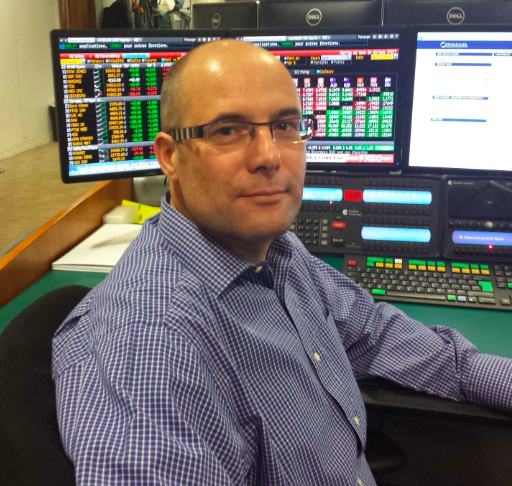Finding the Next Google Is About Talent, Not Location
| By Alicia Miguel | 0 Comentarios

“Great companies that turn an industry upside down can come from anywhere, and the next Microsoft or Google is just waiting to be found. To find them, you need to be more aware of talent than of location”, says entrepreneur Niklas Zennström.
Zennström now runs investment firm Atomico trying to find and develop the high-tech winners of tomorrow. He was speaking to a knowledge-sharing session with the RobecoSAM Private Equity team, which was one of the first institutions to invest in Atomico.
And Zennström certainly knows a thing or two about nurturing young companies into a global giant worth billions. He is best known for co-founding Skype, which he and business partner Janus Friis sold to eBay in 2005 for USD 2.5 billion, reacquired it in 2009, and sold it to Microsoft for USD 8.5 billion in 2011. The two men had previous co-founded the file-sharing internet service Kazaa which became the most downloaded software in 2003.
Zennström, a 48-year-old Swede, is now trying to find the next Skype, searching for young tech companies that have strong business models but need venture capital and/or expertise to expand. The companies must be internet orientated and have a proven business model.
But his most important rule is that the companies should generally be based outside Silicon Valley, challenging the hegemony of the US high-tech epicenter that has produced companies such as Google and Facebook. He specializes in developing companies with ‘disruptive’ products – those which are capable of challenging, and beating, leaders in established industries.
Big disruption from small places
“Great companies can come from everywhere – it is one of the biggest investment opportunities in the world today,” says Zennström, who retains his entrepreneurial zeal despite never having to work again. “This is the core reason why we started Atomico. We have a clear purpose and focus to enable high-growth companies from outside Silicon Valley to develop disruptive products.”
Skype was the ultimate disruptive product. Developed from small offices in small countries – Estonia, Sweden and the Netherlands – it took on the entire international telecoms market by offering the ability to make free phone calls over the internet. Skype now accounts for 40% of the international calls market.
“We look for growth companies, based outside Silicon Valley, for a global market. That’s how Skype started, and it can happen again,” he says.
“When we were building Skype 10 years ago, it was quite unusual for a couple of Swedes, a Dane and an Estonian guy to try to disrupt the global telecommunications industry. Very few people believed in us – we were seen as crazy.” He was rejected by 25 investors, including a prominent firm which demanded that the fledgling firm move to Silicon Valley, which he declined to do.
“All this negative feedback didn’t stop us from trying to build a successful international business – which we did,” he says. “It was a big competitive advantage for us coming from a small country like Sweden, where the home market is too small. It forced us to think of the global market.”
Finding global talent is the challenge
Since Skype was founded, 30 technology companies which now have market values above USD 1 billion have been created within Silicon Valley and another 10 in China, but 40 were created elsewhere.
“This tells us you don’t have to be there to create a great company,” he says. “It’s actually more likely that the next USD 1 billion company will come from outside it. The challenge is to find them.”
“Geography is becoming less and less relevant, and the reason for this is fundamentally about talent,” he says. “Talent is everywhere – just like in sports and music, entrepreneurs are all over the world. But to enable them to blossom and build great businesses, they need ecosystems around them.”
“Historically there have been significant barriers to creating large technology companies. You needed to have access to computing power, bandwidth hubs, and information, along with capital of course. This has changed completely over the past decade.”
“Thanks to the internet, entrepreneurs from all over the world have access to the same type of information, whether they are in Rotterdam or São Paolo. It’s a level playing field now you have open-source software, and thanks to cloud computing, you no longer need access to data centers.”
Access to capital is still a barrier
However, access to capital is still a significant barrier to growth for new companies, he says. The acquisition of ‘non-native’ skills is also important as most tech companies tend to be started by engineers who lack wider business acumen. There are often also differences in national markets, cultural issues and problems with making the right contacts in larger markets where a small company would not know where to start.
“For us, this creates a huge opportunity, as we found with our own journey with Skype, where we had to build partnerships and develop knowledge to get into foreign markets such as Japan,” he says. “This is now something we bring as an asset manager to the companies that we invest in. We don’t just provide capital: we provide real, practical help to enable these companies to reach their full potential.”
Finding the right exit strategy for a company – a mainstay of any private equity firm’s business – is also important. Atomico was able to introduce one of its investees, the Finnish games maker Supercell to Gung-ho in China to crack the Chinese gaming market. It led to the Japanese investor Softbank buying a 50% stake in Supercell, valuing it at USD 3 billion and making instant multi-millionaires of the founders.
In another example, investee company Climate Corporation, which sells weather insurance to farmers, was sold for USD 1.1 billion to Monsanto, an agricultural giant not previously known for buying technology companies.
“Neither side could have predicted that something like this would happen when the business was started,” he says. “It proves that a great company can come from anywhere and also that a great exit can come from anywhere.”
“It’s hard to predict where the next ‘big thing’ will come from. But what’s really interesting is the coming together of offline and online. In the future it will no longer be relevant, because consumers will buy products and decide whether it is cheaper to buy the same thing offline or online. It will be the same showroom but in different environments.”







